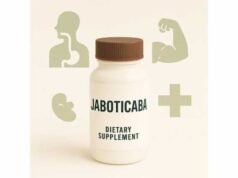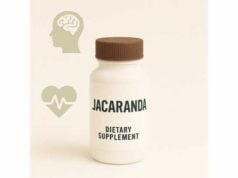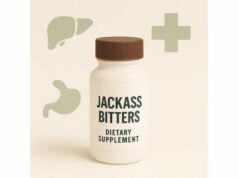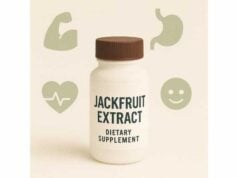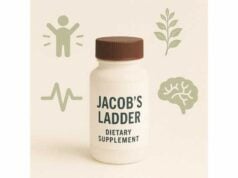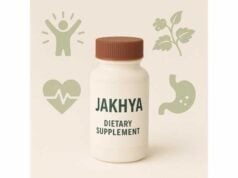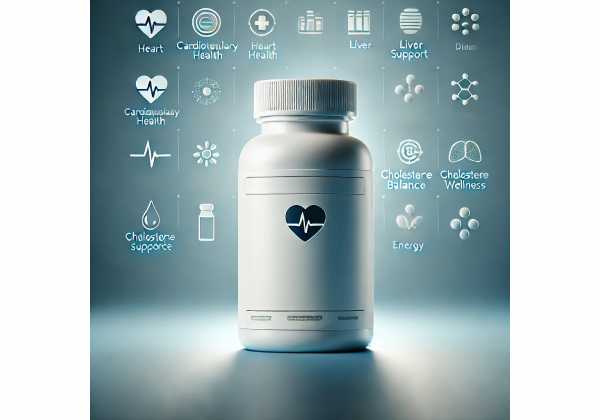
Javanese ginseng (Talinum paniculatum)—also called “Java ginseng,” “Som Jawa,” or “Jewels of Opar”—is a leafy, succulent herb with fleshy roots that resemble Asian ginseng. While unrelated to Panax ginseng, it’s valued across Indonesia, Brazil, and parts of Asia and Latin America as a food and traditional remedy. Modern lab and animal research suggests antioxidant, cardioprotective, antimicrobial, and possible reproductive effects, driven by triterpenoid saponins (like oleanane-type), sterols, and polyphenols. People use leaves in soups and teas, and roots in capsules or tinctures for stamina, recovery, and menstrual or postpartum support.
This guide translates the research into plain language: what it is, how it may work, how to use it responsibly, who should avoid it, and what side effects to watch for. Because clinical trials in humans are still limited, dosing is conservative and food-first. You will learn practical preparation methods, quality tips, and how Javanese ginseng compares with better-known adaptogens—without hype, so you can decide if it fits your goals and medical profile.
Quick Facts
- Antioxidant and cardioprotective activity observed in animal models; antimicrobial effects in lab studies.
- No established human dose; follow product directions; for tea, 1–2 g dried leaf per cup up to twice daily.
- May relax uterine muscle in animal studies; avoid during pregnancy unless a clinician approves.
- People with hormone-sensitive conditions, scheduled surgery, or on blood pressure, heart, or hormone therapies should consult a clinician first.
Table of Contents
- What is Javanese ginseng and how does it differ from Panax?
- What benefits are supported by current evidence?
- How to use it: forms, preparations, and practical dosage
- Quality checks: how to choose safe, effective products
- Side effects, interactions, and who should avoid it
- What we still do not know and how it compares to other adaptogens
What is Javanese ginseng and how does it differ from Panax?
Javanese ginseng (Talinum paniculatum) is a fast-growing, drought-tolerant herb in the Talinaceae family. It’s native to the Americas but widely cultivated in Southeast Asia, where the leaves serve as a nutritious vegetable and the roots are used in traditional tonics. The nickname “ginseng” comes from the carrot-like, fleshy roots and tonic reputation—not from botanical or chemical kinship with Panax ginseng. That distinction matters: the main active compounds differ, and so do expected effects and safety profiles.
Key constituents. Javanese ginseng contains triterpenoid saponins (oleanane-type), phytosterols (campesterol, stigmasterol, β-sitosterol), phenolics, and flavonoids. Saponins—built on a β-amyrin backbone—are thought to underlie many bioactivities, including antioxidant and membrane-stabilizing effects. Phytosterols may support cell membrane integrity, while phenolics and flavonoids contribute free-radical scavenging and may modulate inflammatory signaling. In the kitchen, the leaves provide vitamin C and minerals; as a tea or extract, the same molecules drive the herb’s pharmacology.
How it may work.
- Oxidative stress and inflammation: Polyphenols and saponins may reduce oxidative markers and support endogenous antioxidants (e.g., SOD, catalase) in animal models.
- Cardiovascular tone: Extracts have shown ACE-inhibitory activity in animals, potentially supporting vascular function and protecting against chemotherapy-related cardiac stress in hypertensive rat models.
- Uterine muscle: Root extracts relaxed rat uterine muscle in lab studies, a tocolytic effect that argues for caution in pregnancy.
- Microbial balance: Leaf extracts have inhibited certain bacteria and yeast in vitro; these findings are preliminary and not a substitute for antibiotics when indicated.
How it differs from Panax. Panax ginseng centers on ginsenosides (dammarane-type saponins) with relatively robust human research for fatigue and cognition. Javanese ginseng centers on oleanane-type saponins and sterols; human clinical data remain scarce. Practically, consider Javanese ginseng a mild, food-forward tonic with promising preclinical data—useful for culinary wellness and gentle support—rather than a substitute for Panax in conditions where human evidence favors Panax.
Bottom line. Javanese ginseng is best approached as a nutrient-dense leafy herb with emerging pharmacology. It may support oxidative balance, vascular function, and microbial defense in specific contexts, but clinical proof in humans is limited. Use it conservatively, prioritize food forms, and consult a clinician when pairing it with medications or using it for health conditions.
What benefits are supported by current evidence?
1) Antioxidant support (preclinical). Ethanolic extracts of T. paniculatum leaves and roots consistently demonstrate free-radical scavenging in chemical assays and reduce oxidative stress markers in animal experiments. In rodent stress models, root extracts have been associated with higher superoxide dismutase (SOD) activity and lower lipid peroxidation indices. Mechanistically, oleanane-type saponins and phenolics likely quench reactive species and may upregulate endogenous antioxidant enzymes. These data are meaningful for hypothesis-building, but human trials are needed to confirm real-world outcomes like reduced fatigue, improved exercise recovery, or healthier cardiometabolic markers.
2) Cardiovascular protection (animal models). In hypertensive rats exposed to doxorubicin, T. paniculatum ethanol extract helped preserve hemodynamics and cardiac structure and was associated with angiotensin-converting enzyme (ACE) inhibition and improved serum antioxidant activity. Translationally, this suggests potential for vascular support and resilience under oxidative load. However, we cannot infer human dosing, benefits, or safety in oncology from animal data; anyone undergoing chemotherapy must seek oncologist guidance before adding any supplement.
3) Antimicrobial activity (in vitro). Leaf extracts—and especially certain nonpolar fractions—have inhibited growth of Staphylococcus aureus, Serratia marcescens, Escherichia coli, Micrococcus luteus, and Candida albicans in laboratory assays at micromolar-to-microgram-per-milliliter ranges. Two practical caveats: (a) in-vitro potency does not guarantee in-vivo efficacy, and (b) extracts and fractions differ markedly; food use of leaves is unlikely to produce comparable antimicrobial levels in the body. Still, these findings support culinary hygiene applications (e.g., as a fresh herb in meals) and rationalize further development of topical or oral formulations.
4) Reproductive and uterine effects (mixed preclinical signals). Root extracts reduced uterine contractility in nonpregnant rat models. Separate toxicology work found no estrogenic effect and no adverse impact on puberty onset in rats given leaf fractions across short-term exposures. Traditional postpartum use in parts of Southeast Asia persists, but animal evidence suggests both potential utility (uterine relaxation) and a safety caution in pregnancy (risk of affecting uterine tone). People planning pregnancy, pregnant, or postpartum should involve a clinician before use.
5) Nutritional value and “tonic” potential. Leaves used as a vegetable provide vitamin C and minerals, adding a modest antioxidant and micronutrient lift to the diet. As part of an overall pattern of diverse plant foods, this can support general wellness, especially in hot seasons when other greens falter. Nutrient density, not pharmacological strength, is the primary reason to treat Javanese ginseng as a kitchen staple.
Strength of evidence at a glance.
- Strongest lines: Antioxidant, antimicrobial (lab/animal); ACE-related vascular support (animal).
- Emerging: Reproductive/uterine modulation (animal data, mixed signals).
- Not established: Specific human benefits for fatigue, cognition, mood, blood pressure, glucose, or immunity. No consensus human dose.
Practical implication. If you enjoy the taste and want a gentle, food-first tonic, Javanese ginseng can be part of a healthy routine. If you seek targeted therapeutic outcomes (e.g., blood pressure control), rely on clinician-guided therapies; consider Javanese ginseng complementary and discuss potential interactions.
How to use it: forms, preparations, and practical dosage
Culinary forms (preferred starting point).
- Fresh leaves: Add a handful to soups, stir-fries, omelets, or blended into green sauces. Cooking softens mild mucilage and preserves palatability; brief sautéing minimizes nutrient loss.
- Broth or tea: Simmer fresh leaves (loose handful per mug) for 5–8 minutes; strain and sip. Flavor pairs well with lemongrass, ginger, or mint.
- Powdered leaf (home-dried): Spread washed leaves to dry in shaded airflow; grind lightly. Use ½–1 teaspoon in soups or smoothies.
Supplement forms.
- Capsules/tablets: Typically standardized to a total extract but not to a widely accepted marker. Choose products that declare extract ratio (e.g., 10:1) and solvent (e.g., water/ethanol).
- Tinctures: Hydroethanolic extracts (e.g., 1:5 in 45% ethanol). Start low (e.g., 1 mL) and titrate cautiously only under professional guidance.
- Topical preparations: Traditional poultices use fresh leaves on minor scrapes; modern products are uncommon. Maintain wound hygiene standards and discontinue if irritation occurs.
Practical dosage guidance. There is no standardized, clinically validated human dose for Javanese ginseng. Given the limited human data and to align with food-first use:
- Tea or infusion: 1–2 g dried leaf (about ½–1 teaspoon) per 200–250 mL hot water, up to twice daily.
- Culinary use: A small handful of fresh leaves (roughly 15–30 g) in meals a few times per week.
- Commercial extracts: Follow the label. If a product provides a 10:1 leaf extract, a cautious range might be 150–300 mg/day, taken with food, only after confirming compatibility with your medications and conditions.
- Cycling: Consider 5 days on, 2 days off for 2–4 weeks, then reassess with your clinician.
Timing and stacking.
- Take with meals to reduce GI upset.
- Avoid combining with other herbs that strongly affect blood pressure, uterine tone, or hormones without medical advice (e.g., Panax ginseng, dong quai, licorice).
- For workout recovery, pair food-form leaves with protein and complex carbohydrates; the goal is nutrient synergy, not pharmacologic dosing.
Populations needing individualized plans.
- Pregnant or trying to conceive: Avoid unless your obstetric provider approves.
- Breastfeeding: Evidence in humans is insufficient; if considered for milk supply, consult a lactation professional and pediatrician.
- Cardio-metabolic conditions or oncology care: Coordinate with your specialist to avoid conflicts with ACE inhibitors, chemotherapy, or anticoagulants.
When to stop or adjust. Discontinue and seek care if you experience dizziness, palpitations, unusual uterine cramping, allergic reactions (rash, swelling), or sustained GI upset. Reintroduce only after medical review.
Quality checks: how to choose safe, effective products
1) Verify the botanical identity. Labels should list Talinum paniculatum (Jacq.) Gaertn. and the plant part (leaf or root). Avoid products that vaguely say “Java ginseng” without the scientific name or part; several unrelated plants are nicknamed “ginseng.”
2) Look for transparent extract details. Reputable labels disclose: extraction solvent (water/ethanol), plant-to-extract ratio (e.g., 10:1), and excipients. Because no single marker compound is universally standardized for T. paniculatum, brands should at least report total saponins or phenolics and provide batch certificates on request.
3) Prefer third-party testing. Choose brands that test for identity, potency, and contaminants (heavy metals, pesticides, microbes). If a seller cannot provide a certificate of analysis (COA), look elsewhere.
4) Match form to your goal.
- General wellness/culinary: Fresh or dried leaves used as a vegetable or tea.
- Targeted experimentation (with clinician input): A simple, single-ingredient extract with clear specs. Avoid “proprietary blends” that hide per-ingredient doses.
- Topical folk uses: Fresh leaves from a clean source; wash thoroughly, and never apply to deep or infected wounds.
5) Watch for adulteration and mislabeling. Because “ginseng” is a marketing magnet, some products mix unrelated species or include stimulants. Red flags include overpromises (“cures hypertension”), lack of Latin name, or stimulant-like effects inconsistent with Javanese ginseng’s gentle profile.
6) Storage and shelf life. Keep dried leaves and capsules in a cool, dry place away from sunlight. Aromatic loss or color fading reduces potency. Aim to use dried plant material within 12 months and extracts by their expiration date.
7) Ethical and ecological considerations. Favor producers who cultivate rather than wild-harvest and who share traceability data. T. paniculatum is generally hardy and easy to grow; smallholder cultivation supports local economies and reduces pressure on wild stands.
A sample quality checklist you can apply today:
- Scientific name and plant part on the label?
- Extraction method and ratio declared?
- Third-party COA available?
- Single herb (no hidden blends)?
- Realistic claims with safety language?
If you can check “yes” to all, you’re likely holding a better product.
Side effects, interactions, and who should avoid it
Expected tolerability. In animal toxicology work using leaf fractions, researchers observed no overt toxicity and no acceleration of puberty onset across typical study durations. Culinary use of leaves is common in parts of Asia and Latin America. Still, supplements concentrate compounds beyond food levels, and individual responses vary.
Possible side effects (usually mild and transient):
- Gastrointestinal: Nausea, soft stools, or bloating—more likely with high doses or on an empty stomach.
- Dizziness or lightheadedness: Theoretically possible if paired with antihypertensives or in sensitive individuals.
- Allergy or skin irritation: Uncommon, but discontinue if rash, itching, or swelling occurs.
Pregnancy and postpartum. Animal studies show Javanese ginseng root extracts can relax uterine muscle, which raises a theoretical risk in pregnancy. Until human data clarify safety, avoid during pregnancy unless your obstetric provider explicitly approves. For postpartum or lactation uses, evidence in humans is insufficient; consult a lactation professional before experimenting, especially if you or your baby have medical conditions.
Medication interactions (theoretical and precautionary):
- Blood pressure and heart medicines (e.g., ACE inhibitors, ARBs, beta-blockers): Animal data implicate ACE modulation; monitor blood pressure and consult your cardiology team before combining.
- Anticoagulants/antiplatelets: Many botanicals interact with clotting; maintain caution and inform your prescriber.
- Hormonal therapies or conditions: Because uterine and reproductive endpoints appear in preclinical studies, people with hormone-sensitive conditions (e.g., endometriosis, fibroids) should seek personalized advice.
- Chemotherapy: Never add supplements during active cancer treatment without oncology approval.
Who should avoid or seek close supervision:
- Pregnant individuals or those trying to conceive.
- People with hormone-sensitive conditions or unexplained uterine bleeding.
- Individuals with unstable cardiovascular disease or on complex heart medication regimens.
- Children and adolescents (insufficient safety data in humans).
How to reduce risk:
- Start with culinary forms and small amounts.
- Introduce only one new supplement at a time.
- Keep a simple log of dose, timing, and any symptoms.
- Share your plan with your healthcare provider, including brand and lot number.
What we still do not know and how it compares to other adaptogens
Evidence gaps.
- Human trials: There are no robust randomized controlled trials in humans testing Javanese ginseng for fatigue, stamina, cardiometabolic health, or lactation. Most data come from lab and animal studies.
- Standardization: No consensus chemical marker or dose exists. Studies use varied plant parts (leaf vs. root), solvents, and concentrations, complicating comparisons.
- Long-term safety: Sub-chronic animal studies are reassuring for leaf fractions, but long-term human safety data—especially for concentrated extracts—are lacking.
- Reproductive endpoints: Uterine relaxation in animal models encourages caution in pregnancy; human relevance is unknown.
- Drug interactions: Potential ACE pathway involvement and antioxidant effects could influence therapies for blood pressure and heart function; human interaction studies are absent.
Comparison with popular adaptogens and tonics.
- Panax ginseng (Asian ginseng): Stronger human evidence for performance and cognition; distinct ginsenoside chemistry; more drug interaction data; stimulating for some.
- Withania somnifera (ashwagandha): Emerging human data for stress and sleep; withanolides differ from saponins in T. paniculatum; thyroid and sedation considerations.
- Ocimum sanctum (holy basil): Culinary herb with antioxidant and stress-modulating properties; widely used as tea; generally well tolerated.
- Talinum paniculatum (Javanese ginseng): Best framed as a nutritious leafy herb with promising preclinical pharmacology. Use primarily as food, and treat supplements as experimental unless guided by a clinician.
Real-world positioning. If you want a gentle, food-based plant to broaden dietary diversity and potentially support oxidative balance, Javanese ginseng fits well. If your goal is clinically meaningful improvements in endurance or specific cardiovascular endpoints, choose therapies with established human data and consider Javanese ginseng only as a complementary culinary addition.
Research priorities to watch:
- Well-designed human trials on blood pressure, exercise recovery, or chemotherapy-adjacent support (with strict oncology oversight).
- Standardized extracts anchored to a defined saponin profile.
- Rigorous interaction studies with ACE inhibitors and common cardiac medications.
- Safety registries tracking pregnancy outcomes and lactation metrics when exposure occurs under medical supervision.
Bottom line. Javanese ginseng offers nutrient density and intriguing lab and animal data. Until human studies catch up, take a cautious, culinary-first approach and collaborate with your healthcare team when considering supplements.
References
- CHEMICAL CHARACTERIZATION AND EVALUATION OF ANTIBACTERIAL, ANTIFUNGAL, ANTIMYCOBACTERIAL, AND CYTOTOXIC ACTIVITIES OF Talinum paniculatum 2015 (Study)
- The effects of Ginseng Java root extract on uterine contractility in nonpregnant rats 2014 (Animal Study)
- Effects of Talinum paniculatum (Jacq.) Gaertn. leaf extract on general toxicity and pubertal development of rats 2021 (Toxicology)
- Cardioprotective effects of Talinum paniculatum (Jacq.) Gaertn. in doxorubicin-induced cardiotoxicity in hypertensive rats 2021 (Animal Study)
- A newly identified β-amyrin synthase gene hypothetically involved in oleanane-saponin biosynthesis from Talinum paniculatum (Jacq.) Gaertn. 2023 (Mechanistic/Phytochemistry)
Disclaimer
This article is for educational purposes and is not a substitute for personalized medical advice, diagnosis, or treatment. Javanese ginseng has limited human research and may interact with medications or affect pregnancy. Always consult a qualified healthcare professional before starting, stopping, or combining any supplement, especially if you are pregnant, breastfeeding, planning surgery, managing a medical condition, or taking prescription drugs.
If you found this helpful, consider sharing it on Facebook, X (formerly Twitter), or your favorite platform, and follow our updates. Your support helps us continue creating clear, high-quality guides.

